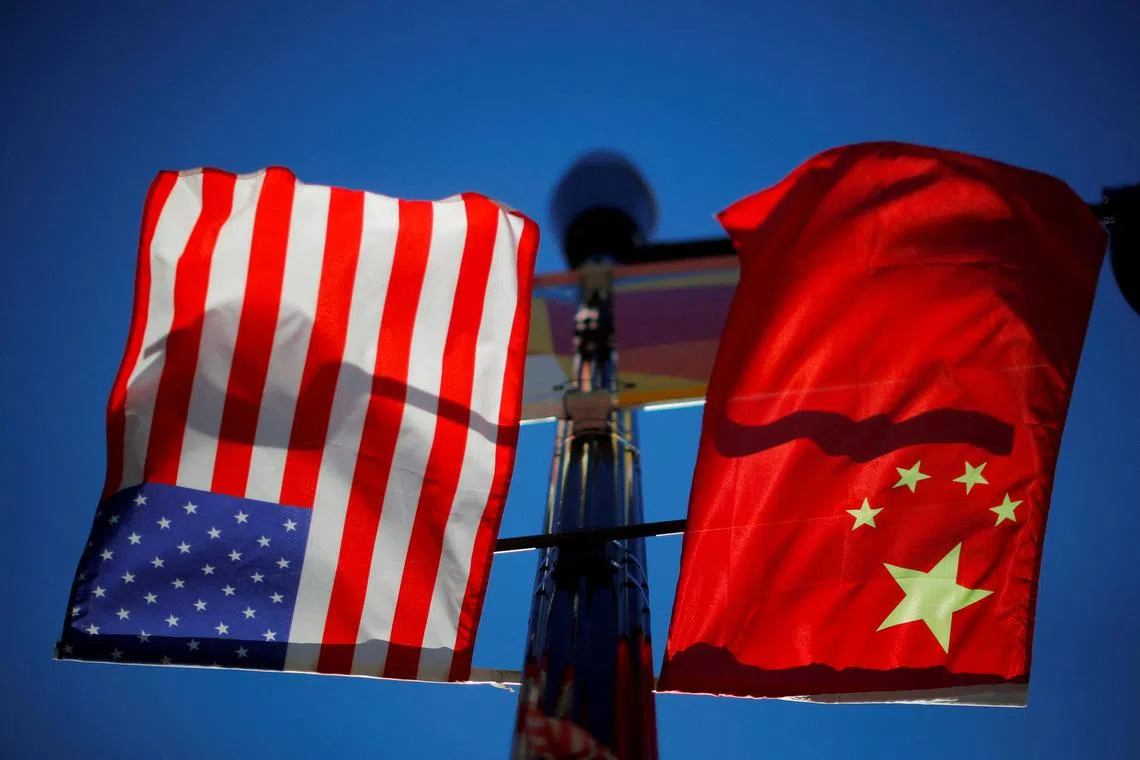US says Chinese fighter jet came within 3m of its military aircraft
Sign up now: Get insights on Asia's fast-moving developments

A Chinese Navy J-11 fighter jet and a US air force RC-135 aircraft came close to colliding on Dec 21, says the US military.
PHOTO: REUTERS
Follow topic:
WASHINGTON - A Chinese military plane came within 3m of a US air force aircraft in the contested South China Sea last week and forced it to take evasive manoeuvres to avoid a collision in international airspace, the US military said on Thursday.
The close encounter followed what the United States has called a recent trend of increasingly dangerous behaviour by Chinese military aircraft. The incident, which involved a Chinese Navy J-11 fighter jet and a US air force RC-135 aircraft, took place on Dec 21, the US military said.
A US military spokesman said the Chinese jet came within 3m of the plane’s wing, but 6m from its nose, which caused the US aircraft to take evasive manoeuvres. The US has raised the issue with the Chinese government, a separate US official said.
The US Indo-Pacific Command, which is part of the US Armed Forces, said in a statement on Thursday that it expected all states in the region “to use international airspace safely and in accordance with international law”.
A spokesman for the command, referring to China’s People’s Liberation Army (PLA) by its initials, also said in an e-mail: “We have seen an alarming increase in the number of unsafe aerial intercepts and confrontations at sea by PLA aircraft and vessels. So this latest incident reflects a concerning trend of unsafe and dangerous intercept practices by the PLA that are of grave concern to the United States.”
As to why the US military waited eight days to publicise the encounter, another spokesman wrote, “Disclosure of this type takes time to verify details, obtain and declassify imagery and make proper notifications to other government agencies.”
Chinese Foreign Ministry spokesman Wang Wenbin told reporters at a regular briefing on Friday that Washington’s provocative and dangerous actions in the South China Sea were the “root of maritime safety problems”, which “seriously endangers China’s national security”.
Noting that the US has frequently sent military ships and aircraft to the area to carry out surveillance operations, Mr Wang urged Washington to stop “making such dangerous provocative moves, as well as smearing China”.
“China will continue to take necessary measures to defend its sovereignty and security, and, together with countries in the region, safeguard the peace and stability of the South China Sea,” he added.
China claims vast swathes of the South China Sea that overlap with the claims of Vietnam, Malaysia, Brunei, the Philippines and Taiwan.
Trillions of dollars in trade flow every year through the waterway, which also contains rich fishing grounds and gas fields.
In a meeting with his Chinese counterpart in November, US Defence Secretary Lloyd Austin raised the need to improve crisis communications, and also noted what he called dangerous behaviour by Chinese military planes.
US military officials have long sought to maintain open lines of communication with their Chinese counterparts to mitigate the risk of potential flare-ups or deal with any accidents.
Australia’s defence department said in June that a Chinese fighter aircraft dangerously intercepted an Australian military surveillance plane in the South China Sea region in May.
Australia said the Chinese jet flew close in front of the RAAF aircraft and released a “bundle of chaff” containing small pieces of aluminium that were ingested into the Australian aircraft’s engine.
In response, Senior Colonel Tan Kefei, a spokesman for the Chinese Defence Ministry, said in a statement that Australia had “seriously threatened China’s sovereignty and security”.
In June, Canada’s military accused Chinese warplanes of harassing its patrol aircraft as they monitored North Korea sanction evasions, sometimes forcing Canadian planes to divert from their flight paths.
Relations between China and the US have been tense, with friction between the world’s two largest economies over everything from Taiwan and China’s human rights record to US restrictions on tech exports to China.
US House Speaker Nancy Pelosi’s trip to Taiwan in August infuriated China, which saw it as a US attempt to interfere in its internal affairs. China subsequently launched military drills near the island.
China regards Taiwan as a breakaway province awaiting reunification, by force if necessary. Taiwan, however, rejects China’s sovereignty claim.
The US has no formal diplomatic relations with Taiwan, but is bound by law to provide the island with the means to defend itself. REUTERS, NYTIMES

